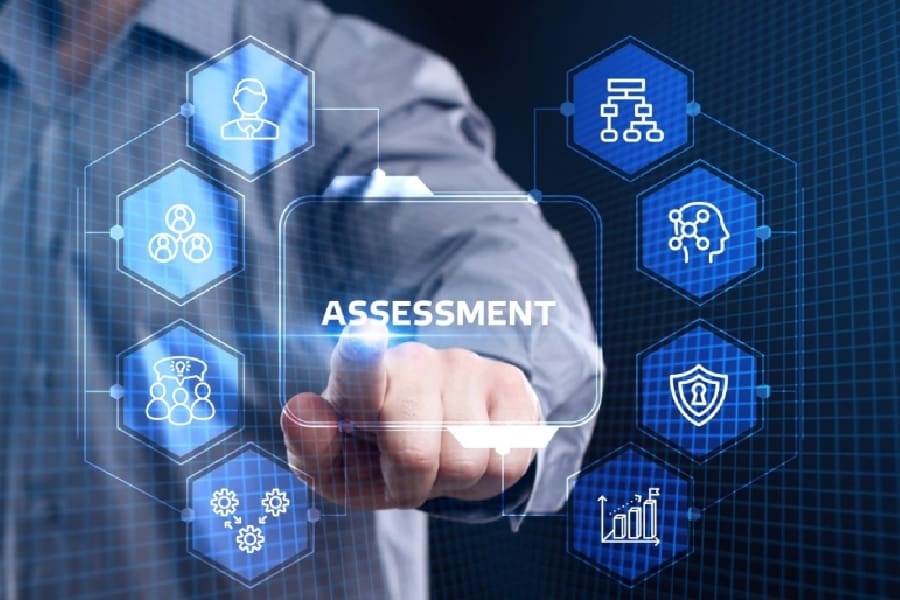The ROI of Cybersecurity Risk Assessments

The need for robust cybersecurity measures has never been more crucial today. With cyberattacks constantly evolving in sophistication and magnitude, organizations across industries are realizing the importance of proactively managing cybersecurity risks to protect sensitive data, safeguard customer trust, and minimize potential financial loss.
We will delve into the tangible benefits that organizations can derive from conducting comprehensive risk assessments, ultimately highlighting how these investments can yield substantial returns on investment (ROI) both in terms of security posture enhancement and long-term business success.
So let us explore the compelling reasons why businesses should prioritize cybersecurity risk assessments as a cornerstone of their overarching security strategies.
Understanding the Cost of Cyber Threats
As we become more dependent on technology, it also becomes more vulnerable to cyber-attacks that can compromise sensitive data and erode customer trust. Conducting comprehensive risk assessments allows organizations to understand the specific cybersecurity risks they face and assess their potential impact.
With limited budgets, it is important for companies to prioritize investments based on their severity and potential impact on business operations. A thorough risk assessment helps identify high-priority areas where investment in stronger defenses would generate a higher ROI by preventing potentially significant financial losses down the line.
Comprehending the cost of cyber threats through effective risk assessments provides multiple advantages for businesses. It empowers them with knowledge about vulnerabilities in their systems, enabling proactive steps towards implementing robust security measures.
The Process of a Cybersecurity Risk Assessment
A cybersecurity risk assessment involves identifying, evaluating, and mitigating risks that could compromise the confidentiality, integrity, and availability of sensitive information. The first step in this process is to assess the current security posture by gathering data on existing controls, policies, procedures, and infrastructure.
Once the initial assessment is conducted, the next phase involves identifying potential risks and vulnerabilities through techniques such as vulnerability scanning or penetration testing. This helps identify weaknesses in systems or processes that may be exploited by malicious actors.
Based on these findings, an organization can then prioritize risks based on severity or impact to determine where resources should be allocated for mitigation efforts.
After prioritizing risks, organizations must develop a plan for managing identified threats effectively. This includes implementing appropriate countermeasures such as firewalls, intrusion detection systems (IDS), encryption protocols, employee training programs on cyber awareness & education courses etc., monitoring tools/tools like threat intelligence feeds/sources/alerts which allows for better detection response capability.
Quantifying the ROI of Cybersecurity
Quantifying the ROI of cybersecurity involves assessing both tangible and intangible factors. The tangible benefits include reduced financial loss due to data breaches and regulatory fines, as well as decreased costs associated with incident response and recovery efforts. A strong cybersecurity posture enhances customer trust and loyalty, leading to increased revenues through repeat business and positive word-of-mouth referrals.
A robust cybersecurity strategy reassures stakeholders that an organization takes its responsibility towards protecting sensitive information seriously. This enhanced reputation can lead to opportunities for partnerships or contracts with other trusted entities in the industry.
By investing in regular risk assessments and implementing effective cybersecurity measures based on their findings, organizations can achieve a positive ROI by safeguarding valuable assets while minimizing potential financial loss.
Securing Your Digital Assets
Securing your digital assets through comprehensive cybersecurity risk assessments is essential in our digitizing landscape. Proactively managing and identifying potential risks can protect sensitive data and maintain customer trust. Conducting regular risk assessments allows businesses to stay ahead of evolving cyber threats and minimize the potential financial damage caused by a breach.
The ROI of cybersecurity risk assessments is evident as organizations can identify vulnerabilities before they are exploited by hackers. Not only does this save businesses from the financial burden of recovering from a cyberattack, but it also helps them avoid reputational damage that could lead to loss of customers and credibility in the market.
Investing in robust security measures and conducting regular assessments acts as an insurance policy, ensuring that companies are well-prepared to withstand any potential threats.
Effective risk management practices enhance compliance with industry regulations such as GDPR or HIPAA, reducing legal risks for organizations.
The proactive approach to cybersecurity not only protects valuable digital assets but also establishes a competitive advantage for businesses that prioritize data privacy and security.
from: https://www.heroictec.com/the-roi-of-cybersecurity-risk-assessments/
Comments
Post a Comment